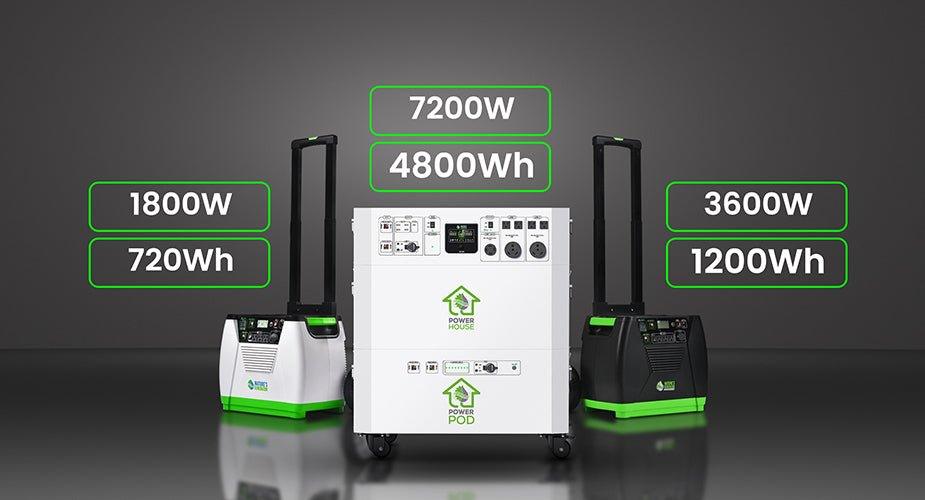Just like any other battery type, lead acid batteries have different voltages at various stages of charge. For instance, a 12V sealed lead acid battery has a voltage of 12.89V at 100% charge, while 11.63V indicates it is at 0% charge. The good news is that you can refer to a lead acid battery voltage chart to find the specific battery voltage (6V, 12V, 24V, 48V, etc.) corresponding to the state of charge (SOC). Using this chart will help you determine the percentage of charge remaining, essentially how much more juice is left in your lead acid battery based on its current voltage reading.
Lead acid battery voltage curves vary depending on factors such as battery type, temperature, and discharge rate. While there are available voltage charts that you can find online or get at your local battery store, it is always best to refer to the lead acid battery voltage chart provided in the manual that comes along with the battery you are using/going to use.
Speaking of battery type, lead acid batteries come in two types: flooded/wet lead acid batteries and sealed lead acid(SLA)/valve-regulated lead acid (VRLA) batteries. Flood lead acid batteries are cheaper although they require more maintenance and proper ventilation. Sealed lead ones SLA/VRLA batteries on the other hand require less maintenance and ventilation, not to mention it is leak-proof and can withstand changing climates better than the flooded variant.
Lead acid batteries are commonly used in various applications, including renewable energy systems like solar power, backup power supplies such as uninterruptible power supplies (UPS), and automobiles for starting and ignition power. For optimal performance in these applications, referring to a lead acid battery voltage chart can help users monitor and maintain their battery’s state of charge effectively.
Below are 3 lead battery voltage charts for the most common lead acid battery voltages - 12V, 24V and 48V. Again, as a reminder, it is always better to use the chart that came straight out of the box of your lead battery but if you’re just looking for a general guide, you may take a look at the chart we have below.
Also, two important things you need to take note of before you proceed: One, when estimating the state of charge, it should be done at room temperature and the battery is at rest for at least half an hour. Second, lead batteries have a depth of discharge (DOD) of approximately 50%. This means that only about 50% of the full capacity of a lead acid battery can be extracted and utilized.
12V lead acid batteries are commonly used in rechargeable solar power systems like Nature’s Generator Gold System and Nature’s Generator Elite Gold System. These portable solar generators make use of 12V AGM-sealed lead acid batteries and each comes with a front LCD display that shows the battery level so you’ll know when it’s time for a recharge.
Going back to the chart above, it shows that a 12V sealed lead acid battery is in its fully charged state at 12.89 volts and that it is in a fully discharged state at 12.23 volts (assuming 50% max DOD). This shows a 0.66 volt difference between 100% and 0% charge.
A 12V flooded lead acid battery on the other hand is in a fully charged state at 12.64 volts and it is in a fully discharged state at 12.07 volts (assuming 50% max DOD). As you can see, there’s a 0.57 difference between 100% and 0% charge.
24V Lead Acid Batteries Chart (Sealed and Flooded)
A 24V lead acid battery is another commonly used battery option for solar power systems particularly, those that provide bigger power capacity.
A 24V sealed lead acid battery is in its fully charged state at 25.77 volts and it is in a fully discharged state at 24.45 volts (assuming 50% max DOD). This is a full 1.32 volts difference between 100% and 0% charge.
With a full 1.15 volts difference between 100% and 0% charge. A 24V flooded lead acid battery, on the other hand, is in fully charged state at 25.29 volts and it is in a fully discharged state at 24.14 volts (assuming 50% max DOD).
48V Lead Acid Batteries Chart (Sealed and Flooded)
Typically used by telecom companies for their backup power supply, a 48V lead acid battery is also utilized in high-capacity solar-powered generators like Nature’s Generator Powerhouse. To ensure optimal performance, consulting a lead acid battery voltage chart can help users monitor the state of charge and manage their battery systems effectively.
Based on the chart above, a 48V sealed lead acid battery is in its fully charged state at 52.00 volts and that it is in a fully discharged state at 48.20 volts (assuming 50% max DOD). This gives us a 3.80 volt difference between 100% and 0% charge.
Meanwhile, a 48V flooded lead acid battery is in a fully charged state at 50.92 volts and it is in a fully discharged state at 48.40 volts (assuming 50% max DOD). This then shows a 2.52 volt difference between 100% and 0% discharge.
Ways to Check Lead Acid Battery Capacity
There are a few ways that you can take to check the lead acid battery capacity.
- Use a Multimeter - The best and easiest way to test the charge of a battery is through the use of a multimeter since it can provide the most accurate and most reliable results against other kinds of battery capacity testers.
- Get a Hydrometer to Check Specific Gravity - Using a hydrometer is another great way to check lead acid battery capacity because of its accuracy. The only downside to this is that it can only work for flooded/wet lead acid batteries.
- Buy a Solar Charge Controller - If you own or are planning to get a solar power system, chances are it will already come with a battery status indicator although you can still buy a solar charge controller if you don’t have one. Although not as accurate as a multimeter or a hydrometer, this method is still a good way to get an estimated result for your guidance. Just make sure to read the manual regarding the margin of error.
Charging Lead Acid
Sealed Lead Acid (SLA) batteries are charged through a systematic process designed to ensure optimal performance and longevity, typically involving a three-stage approach: bulk charging, absorption charging, and float charging. To maximize efficiency during this process, referring to a lead acid battery voltage chart can help users monitor voltage levels and determine the state of charge throughout the charging stages.
In the bulk charging stage, a constant current is applied to the battery, causing it to charge rapidly until it reaches approximately 80% of its full capacity. During this phase, the voltage across the battery steadily increases. Once the bulk charging phase is complete, the absorption charging stage begins. In this phase, the voltage is maintained at a constant level, while the charging current gradually decreases. This allows the battery to absorb the remaining 20% of its capacity more slowly, ensuring that all cells are uniformly charged and preventing overcharging.
The final stage is float charging, where a lower voltage is applied to the battery to compensate for self-discharge. This stage is essential for maintaining the battery at full capacity over extended periods without causing any damage due to excessive voltage or current. The three-stage charging process is a reliable and efficient method for charging SLA batteries, ensuring they remain in peak condition for various applications, such as backup power systems, uninterruptible power supplies, and other devices that rely on these robust and widely used battery technologies.
Lead Acid Battery Charging Curve

Final Thoughts
A lead acid battery voltage chart is a crucial reference that people need to understand and use if they would like to get the maximum value of their batteries. This particular chart is a great guide, especially for those who are not experts but need guidance on how to properly maintain their lead acid batteries. Just don’t forget that while it is absolutely ok to rely on generic lead acid battery voltage charts, using the chart provided by the manufacturer of the battery (or of the product that uses lead battery) will give the best and most accurate figures regarding the battery state of charge.
* We want to give credit where credit is due. Professional writer, Ann Matthew, contributed research and content to this blog titled: Lead Acid Battery Voltage Chart Thank you, Ann, for your contributions!

















